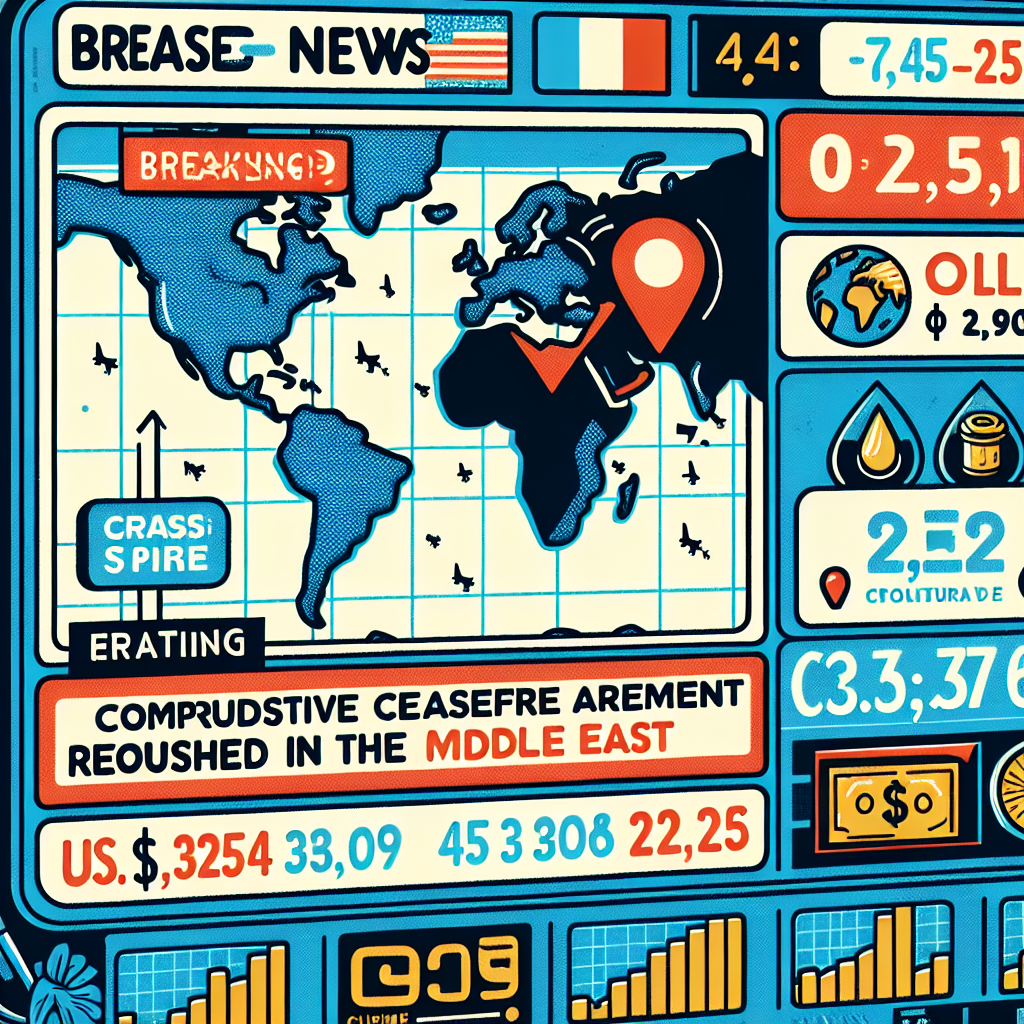US President Trump announced that Israel and Iran have reached a comprehensive ceasefire agreement, set to take effect at midnight on Monday East Coast time. This development marks a turning point in the Middle East situation, with the market responding swiftly. US stock futures are up, while oil and gold prices have seen significant drops. The dollar has weakened, with investors shifting towards risk assets, leading to a general rise in Asian stock markets.
President Trump took to Truth Social to announce that Israel and Iran have reached a “complete and total ceasefire” agreement. According to Trump’s post, both sides will initiate a 12-hour ceasefire period after completing their current actions, ultimately ending the “12 day war” 24 hours later. Trump praised the two countries for showing “resilience, courage, and wisdom,” thus avoiding a war that could have “lasted for years and destroyed the entire Middle East.”
Officials from Iran and Qatar have confirmed that Tehran has agreed to the ceasefire. According to Israeli media reports, Prime Minister Netanyahu expressed willingness to cease fire in his conversation with Trump under the condition that Iran stops its attacks.
Following the ceasefire news, investor confidence has surged, with a noticeable increase in risk appetite in the market. Asia-Pacific stock markets saw widespread gains on Tuesday. Japan’s Nikkei 225 index opened up by 1.08%, South Korea’s KOSPI index surged by 2.13%, Australia’s ASX 200 rose by 1.08%, and Taiwan’s weighted index climbed by 1.89%. Hong Kong’s Hang Seng Index opened with a 1.04% increase, while the Shanghai Composite Index also saw a slight rise of 0.38%.
US stock index futures continued their upward momentum, with Dow futures up by 0.3% and S&P 500 and Nasdaq futures rising by 0.4% and 0.6%, respectively.
In the energy market, concerns over supply disruptions easing led to a sharp drop in oil prices on Tuesday. US West Texas Intermediate (WTI) crude oil futures fell by nearly 6% to $65.46 per barrel, while Brent crude oil futures dropped by 3.76% to $68.79 per barrel, both hitting over a week’s low.
The waning of risk aversion sentiments led to a broad decline in the US dollar, with the dollar index falling by 0.2%. Among major currencies, the USD/JPY exchange rate dropped to 145.79, while the euro and pound strengthened to $1.1602 and $1.3551, respectively.
Another factor contributing to the weakness of the US dollar is dovish comments from Federal Reserve official Michelle Bowman. She suggested that the Fed should consider an early rate cut. This view was also supported by Fed Governor Christopher Waller, who stated in a recent TV interview that he would consider supporting a rate cut at next month’s meeting.
According to the CME FedWatch tool, the market is currently pricing in a 20% chance of a rate cut by the Fed in July, up from 14.5% a day earlier.
With tensions in the Middle East easing and safe-haven funds being withdrawn, international gold prices also fell on Tuesday. Spot gold prices dropped by 0.6% to $3,350 per ounce at one point. As of early Asia trading, gold was reported at $3,353.02 per ounce.
Gold has already risen by 28% this year due to geopolitical conflicts and central banks increasing their reserves. This pullback indicates a rapid weakening of risk-off sentiment. Investors are also keeping an eye on Fed Chair Powell, who is set to testify before Congress this week. Any further dovish signals from him could provide support to the prices of non-interest-bearing assets like gold.

